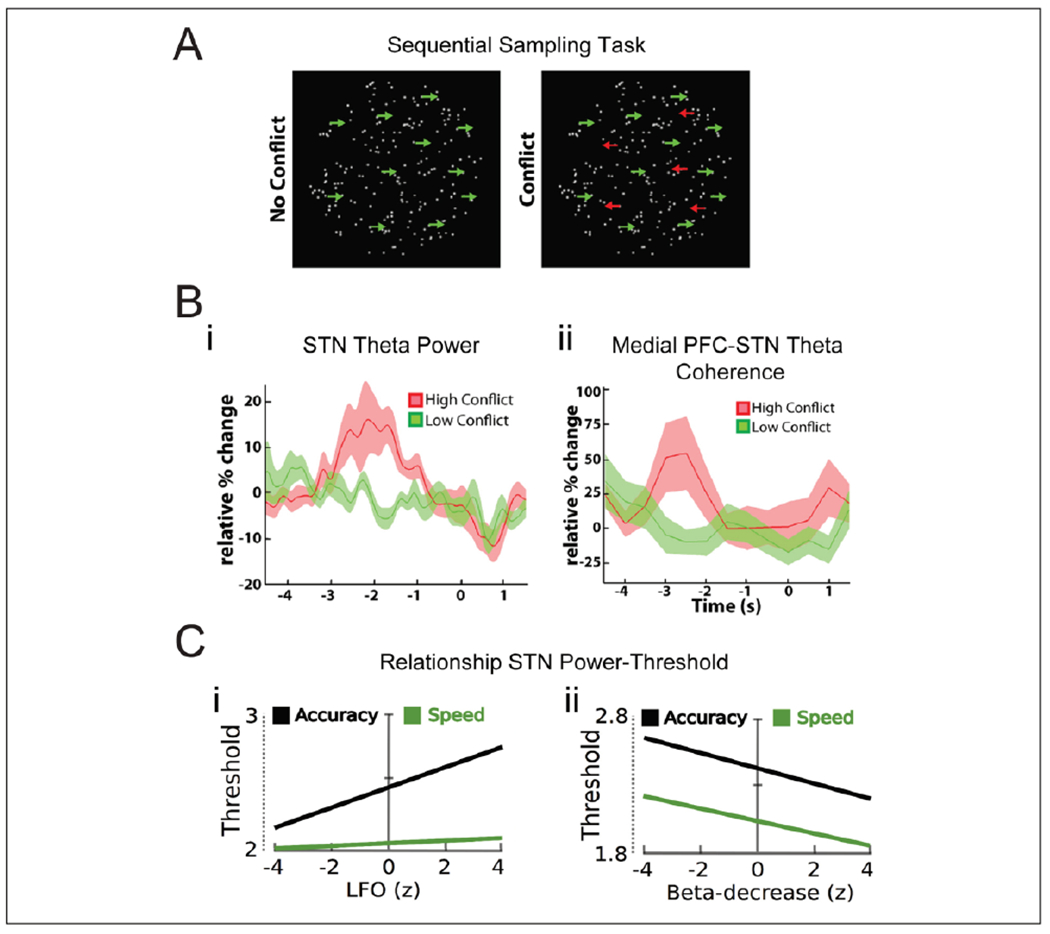Figure 4.

Decision thresholds in the STN. (A, B) Decision making during high and low conflicts. In the moving dot task (A, left), participants are asked to indicate the overall direction of dot movement, which becomes gradually more coherent. Sensory information is sequentially sampled and integrated over time, as evidence for the correct response is accumulated. During high-conflict trials in this study (A, right), some dots moved in the opposite direction of the overall movement direction. STN theta power (B, i) and mPFC-STN theta coherence (B, ii) increased selectively in the high-conflict trials. In this task, increased STN theta power was related to increased decision thresholds in a drift diffusion model, and mPFC-STN theta coupling predicted threshold modulation (Herz and others 2016). (C) Decision making during instructed speed-accuracy tradeoffs. In this task, participants were instructed to be either fast or accurate in their responses, which should indicate the overall direction of moving dots with either high or low movement coherence. Increase in STN theta power predicted decision thresholds only after accuracy instructions (C, left). Decrease in STN beta during high dot moving coherence predicted decreased decision thresholds regardless of instructions (C, right). Reproduced from (A, B) Zavala and others (2014) and (C) Herz and others (2017), licensed under CC BY.
